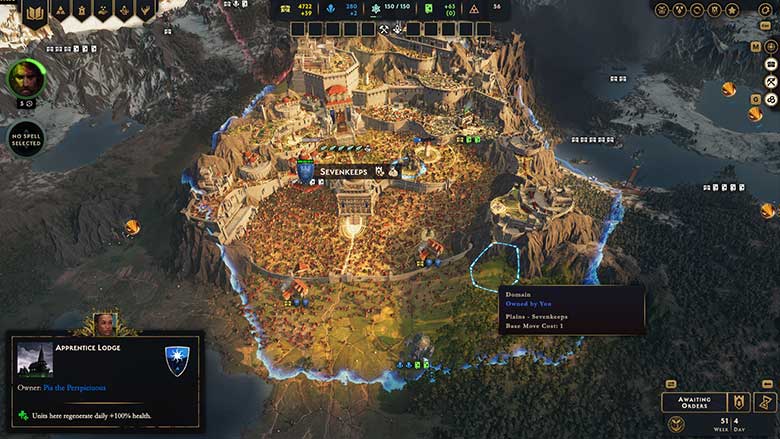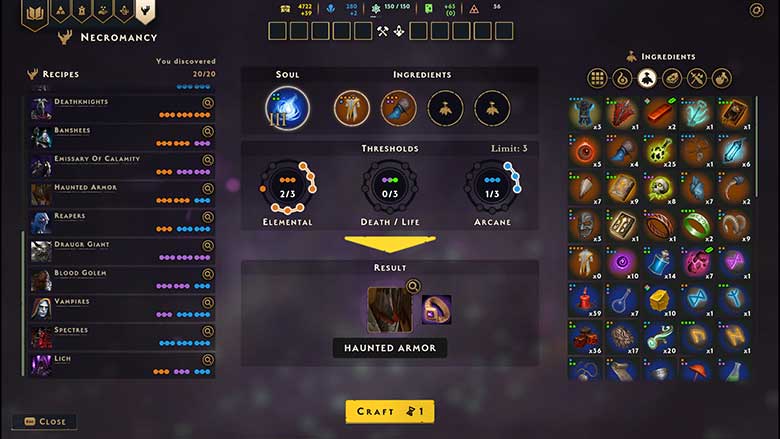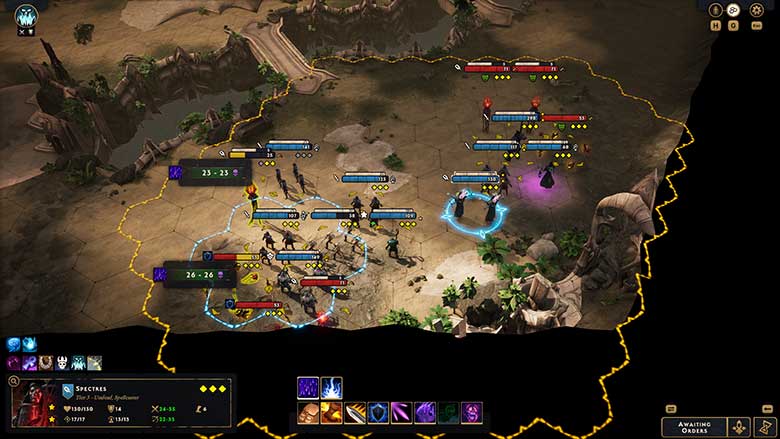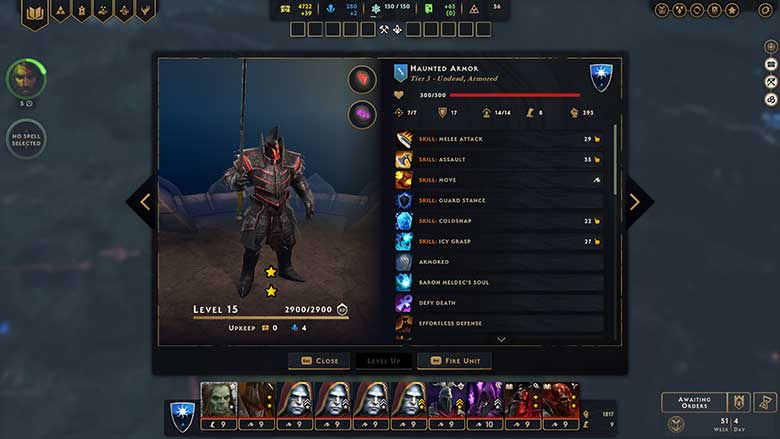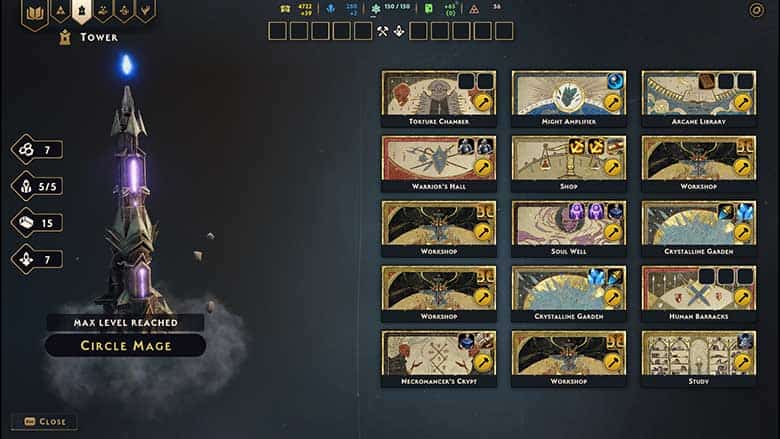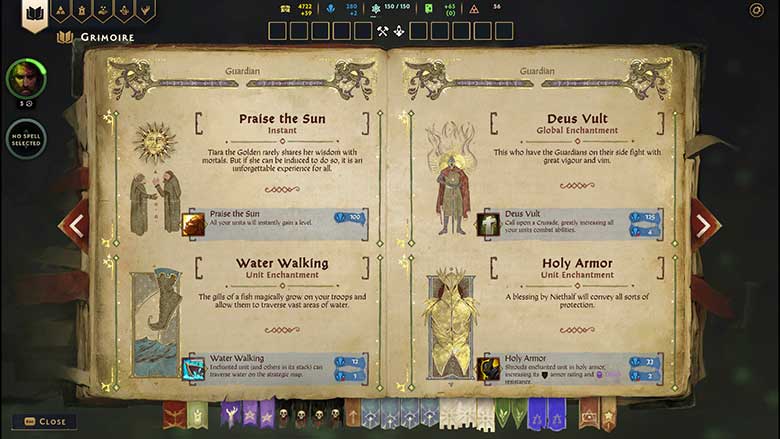SpellForce: Conquest of Eo Review

Official Score
Overall - 85%
85%
I ultimately think SpellForce: Conquest of Eo is going to be a turbulent release. As a fan of turn-based combat, I loved every minute. Exploring the world finding new and powerful allies to add to my armies, discovering new Necromancer recipes to summon deadly hordes of the undead, fighting off the constant attacks from The Circle - it's a game I will return to time and time again. However, long-time fans of the franchise may struggle with the stark differences between turn-based and real-time strategy in a franchise they've grown to love for the latter.
Stepping away from the franchises’ traditional RTS roots, the development team at Owned by Gravity has set out take the fantastical world of Eo in an exciting new direction with the turn-based strategy release of SpellForce: Conquest of Eo. Building on an established franchise already brings its own challenges, but few dare brave – or even consider – something as huge as changing a core aspect of the game. As a series, SpellForce has been met with relatively high praise; does this gamble pay off?
SpellForce: Conquest of Eo Review
[line style=’solid’ top=’10’ bottom=’10’ width=’100%’ height=’1′ color=’blue’]I should probably get this out of the way early: I have minimal experience with the SpellForce franchise. I only played around 20 hours of SpellForce 3 and dabbled with past games. That being said, I am a huge fan of turn-based strategy titles, and what little exposure I had to the world of Eo was intriguing to say the least. If you’re looking to step into this without much knowledge or experience with the other games, this is the review for you.
SpellForce Conquest of Eo is a gentle blend of turn-based strategical combat and the world map and resource management synonymous with the RTS genre. Much like the past SpellForce titles, it’s a hybrid of two styles that works well together, but the narrative is definitely weaker here than in the previous games.
You play the role of a mage who, after the death of his master, is seeking to finish his work and ascend beyond Apprentice. The story follows the journey of the world of Eo as the mages of The Circle fight for control and dominance of a unique magical power called Allfire. As you progress through the game, the story develops purely through text prompts and culminates with either destroying The Circle or aligning with them. The narrative is seldom a focal point, and although it serves its purpose, it feels a little flat.
Thankfully, that’s about the only part of the game I didn’t love. Starting your adventure in SpellForce Conquest of Eo you can choose from one of the three available mage types or create your own. Necromancer, Alchemist, and Artificer all offer entirely different playstyles that are surprisingly contrast to one another. Necromancer, which I played for much of my 50 or so hours, focuses on large armies through the summoning of powerful undead creatures using an ingredients-based summoning system with recipes for 20 different types of units.
Meanwhile, the Alchemist focuses on using potions and powerful items to turn the tide of battle and the Artificer empowers units with strong glyphs, providing increases in stats or brand new abilities. Each mage type focuses on gathering and using different types of ingredients, with each excelling in certain areas of the turn-based system and struggling in others.
As a Necromancer I was easily able to replace lost troops, but struggled with fast military campaigns as my units were unable to heal naturally. This ability is gifted to most mortal units, so I had to balance my resources more carefully to ensure I had the mana available to keep my armies in fighting shape. While the story struggles to entice a second playthrough, the variety between the starting mages offers plenty of replay value.
One of the more unique components of SpellForce: Conquest of Eo is the mobile nature of your stronghold. Your base of operations, The Tower is not only able to uproot and fly, it’s encouraged and required to progress. This is a feature that’s in direct conflict with my normal style of play in these games. Find a location, fortify, and spread. It forced me out of my comfort zone and while, at least initially, it was an element I didn’t much enjoy, it really grew on me as time passed.
You constantly need to move units, reestablish your base of operations, and seek out new resources and locations. However, this is not without reward. Special locations on the map can unlock new troops and perks if within the domain of your tower or a personal house that your heroes can build. Certain buildings allow you to recruit more units or provide a safe place to rest and recover at a faster rate, while other locations are filled with mining and harvesting nodes. Most resources are finite, so while you may have several hours of flourishing income, it won’t be long before the wolves come knocking.
The management of resources, while different for each mage type, is a very simple but effective combination. Gold, Mana, and Research play a vital role in the success or failure of your campaign. As a Necromancer, most of my units required Mana as upkeep. However, as I expanded and recruited more mortal units, my Gold reserves started to dwindle, so I had to adapt and find new locations rich in Gold. It’s a familiar approach to the management side of the game, but one that’s effective and easy to learn.
Much of my excitement in this style of game comes from the discovering of new and exciting units, how to beat them, and how they can be used effectively in my own armies. In that respect SpellForce: Conquest of Eo has a lot to love. My main Necromancer army featured an Apprentice with an ability to summon an undead minion during battle, an expected aspect of the Necromancer lifestyle. Another unit, a tier 3 Lich, had the ability to summon more units for each dead creature on the battlefield. My squadron of Skeleton Archers had a unique ability that increased their damage based on how many units they witness die in a fight.
I never grew bored of that combination for the entire game. Summoning undead creatures to the frontlines, watching them die, to summon more, and all the while my skeletons rained down death from afar, and this is far from the only style of combat. One of my mortal armies had a hero that sat on the backlines played healing melodies, keeping my frontline Paladin’s alive as they brought down the smite on all things unholy. The variety of abilities and combinations on offer is a tantalizing feast for the strategic mind and one that just grows and grows as you discover more powerful items and relics.
The combat in SpellForce: Conquest of Eo is a compact, quick-style turn-based approach that has most fights lasting from 5-15 minutes. Each unit has its strengths and weaknesses, and learning to adapt to what the enemy throws at you is key to survival. The aesthetics of the combat are a little lacking, with each member of each unit moving in identical fashion and each ability playing identical sound effects with every hit. I initially found it quite jarring, but once the strategy aspects of combat began to dawn on me it was difficult not to love every spell, every launch of an arrow volley.
Another area of the game I found really enjoyable was the open-ended nature of the side quests and events. Most, simple text pop-ups with various choices, but I was able to play a Necromancer and still be of the people and for the people, aiding with their plights, donating resources, of course I could just steal their souls, but that’s for my next playthrough. Honestly, I could go on and on about everything I love in SpellForce: Conquest of Eo, but I think whether or not you share that love for this game is going to depend on your affinity for the turn-based style.
I ultimately think SpellForce: Conquest of Eo is going to be a turbulent release. As a fan of turn-based combat, I loved every minute. Exploring the world, finding new and powerful allies to add to my armies, discovering new Necromancer recipes to summon deadly hordes of the undead, fighting off the constant attacks from The Circle – it’s a game I will return to time and time again. However, long-time fans of the franchise may struggle with the stark differences between turn-based and real-time strategy in a franchise they’ve grown to love for the latter.
[infobox style=’success’ static=’1′]This review of SpellForce: Conquest of Eo was done on the PC. A digital code was provided by the publisher.[/infobox][blogger ids=” cat=’honest-game-reviews’ orderby=’date’ order=’desc’ count=’4′ descr=’200′ readmore=’1′ rating=’1′ style=’image_large’ border=’0′ dir=’vertical’]
